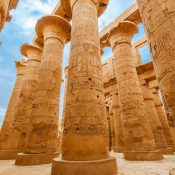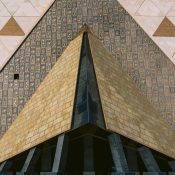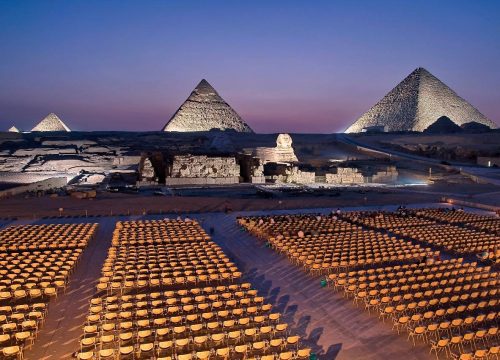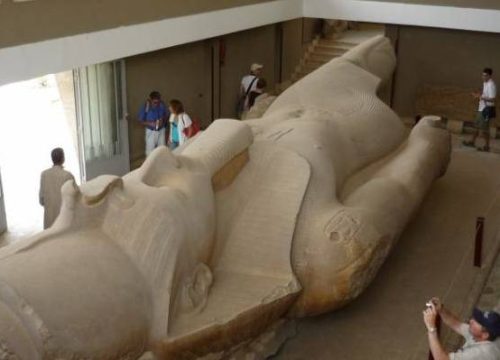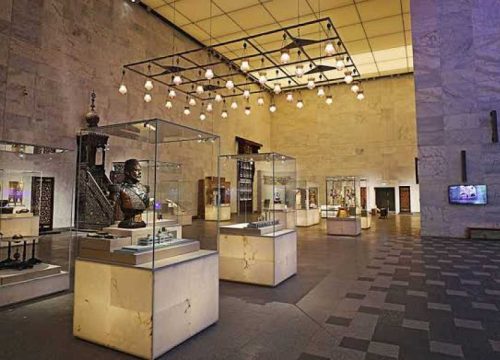
Luxor Temple Guide: Timeless Majesty in the Heart of Egypt
Luxor Temple: A Living Monument in the Heart of the Nile
Standing in the heart of modern-day Luxor, Luxor Temple remains one of Egypt’s most striking and historically rich temples. Unlike many other ancient structures built for gods, Luxor Temple was dedicated to the rejuvenation of kingship and the divine essence of the pharaoh. It was here that ancient rituals took place to confirm the pharaoh’s connection to the gods — and to Egypt itself.
History of Luxor Temple
Pharaoh Amenhotep III commissioned the original construction of the temple around 1400 BCE, during Egypt’s 18th Dynasty. Over time, rulers such as Tutankhamun, Horemheb, and Ramses II expanded and embellished the temple with statues, courts, and inscriptions.
Later periods also left their mark on the temple. The Romans repurposed parts of it into a military camp, and early Christians converted sections into churches. Even today, the Abu Haggag Mosque stands atop ancient temple ruins, showing how Luxor Temple has continued to evolve through the centuries.

What to See at Luxor Temple
When you arrive, you’ll first walk through the grand entrance of Ramses II’s pylon, once fronted by two obelisks (one of which now stands in Paris). A massive seated statue of Ramses II still greets visitors today.
Inside the temple, you’ll explore the Great Court of Ramses II, a vast open area surrounded by colossal papyrus-shaped columns. Beyond it lies the Colonnade of Amenhotep III — a corridor lined with 14 towering columns that lead into deeper parts of the sanctuary.
Along the way, you’ll find depictions of various pharaohs participating in sacred rituals, honoring gods like Amun, Mut, and Khonsu. Inscriptions and reliefs throughout the temple vividly portray the power and divine right of kingship.
At the rear of the temple lies the inner sanctum, once home to the sacred barque shrine used during the Opet Festival, when gods journeyed from Karnak Temple to Luxor Temple via the Avenue of Sphinxes — a 3-kilometer processional road that today once again connects the two temples thanks to extensive restoration efforts.
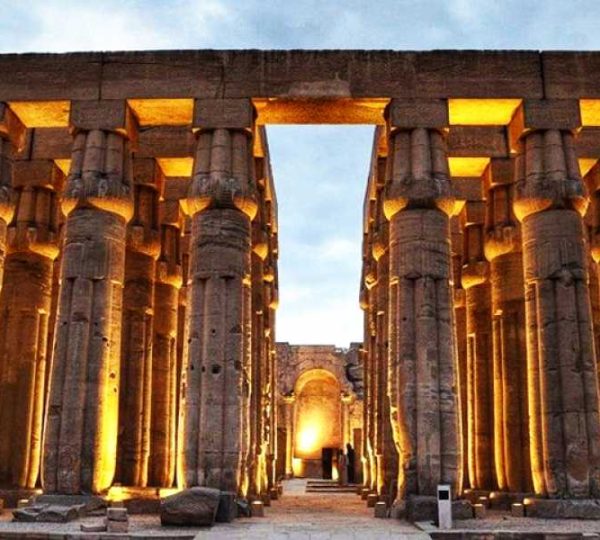
A Night Visit to Remember
While Luxor Temple is impressive by day, it becomes especially magical at night. Strategic lighting casts golden hues over the sandstone columns, creating dramatic contrasts and mystical shadows. An evening visit offers a quieter, more reflective experience of one of Egypt’s greatest ancient monuments.
How to Visit Luxor Temple
Luxor Temple sits in the center of modern Luxor, close to the Nile Corniche, major hotels, and key attractions. You can include the site in a full-day Luxor East and West Bank Tour, or visit it on your own if staying nearby.
Many travelers combine their visit with other Luxor highlights, such as the Valley of the Kings, Karnak Temple, and a Luxor hot air balloon ride for sunrise views over the West Bank.
Browse our Luxor tours for a full list of options.
Related Egypt Travel Resources
For more travel inspiration and booking options, visit our full selection of Egypt tours.

